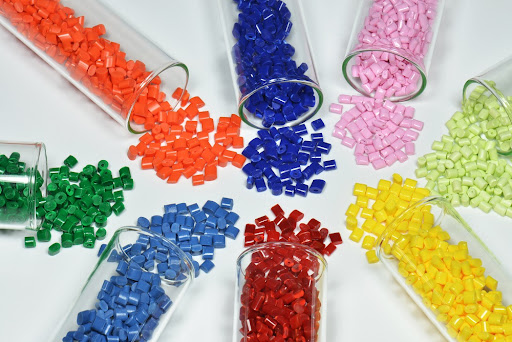Colour masterbatch is one of the common methods for colouring plastics, but whether it is the best way depends on your specific application and requirements. There are several ways to colour plastics, and the choice of method should consider factors such as cost, consistency, production volume, and the final appearance and properties of the plastic product.
Here Are Some Common Methods For Colouring Plastics:
Colour Masterbatch: Colour masterbatch is a concentrated mixture of pigments or dyes that are pre-dispersed in a carrier resin. This method offers good colour consistency, is easy to use, and is suitable for a wide range of plastic processing techniques like injection moulding, extrusion, and blow moulding. It’s commonly used for large production runs.
Dry Colour Mixing: In this method, dry pigment is added directly to the plastic resin during the processing stage. It is suitable for smaller production runs or when a wide range of colours is required. However, it may require more precise control to achieve consistent colour.
Liquid Colorants: Liquid colorants are dye-based colorants that are added to the polymer melt. They are suitable for applications that require transparent or translucent colours. Liquid colorants can be dosed more precisely but may not offer the same colour consistency as masterbatch.
Compounding: Compounding involves melt-blending the plastic resin with pigments and additives. It offers more control over the colour and properties of the final product, making it suitable for custom formulations. However, it’s a more complex and costly process.
In-Mould Colouring: In-mould colouring is a process where colour is added to the mould cavity before injection moulding. It’s suitable for products with intricate designs or multiple colours. However, it’s not as commonly used as masterbatch or other methods.
The choice of colouring method depends on your specific needs. Colour masterbatch is often favored for its ease of use, consistency, and cost-effectiveness for large production runs. However, if you need precise control over colour or have unique requirements, other methods like compounding or in-mould colouring might be more appropriate. Additionally, consider the compatibility of the colouring method with the type of plastic resin you are using, as different resins may require different colouring techniques.



0 Comments